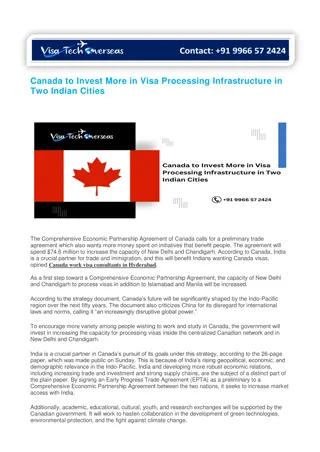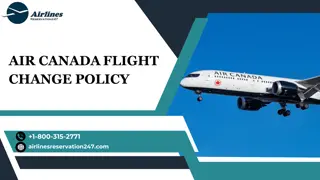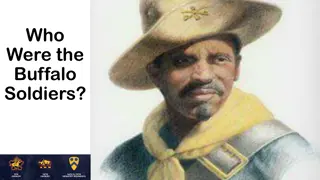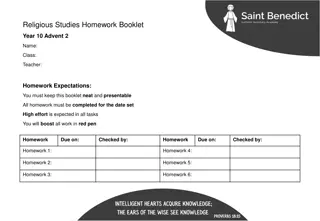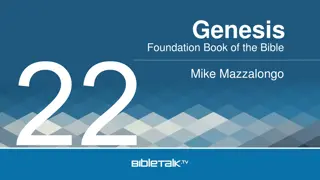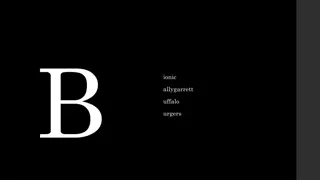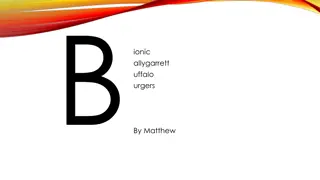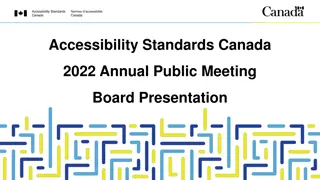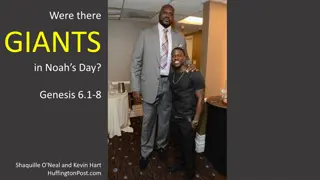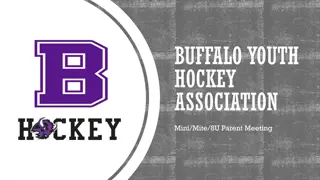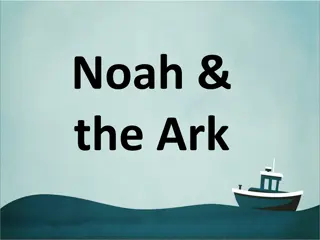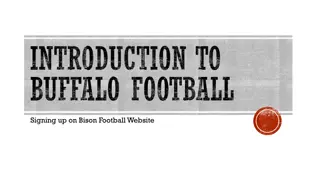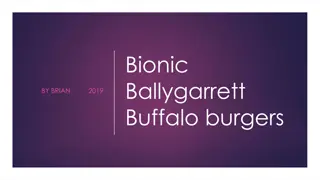Buffalo v. Canada: The Fight for Noah's Rights
Noah Buffalo-Jackson's family, belonging to the Montana Cree Nation, is fighting for the right for Noah to ride a bus to school. They pay tribute to Jordan River Anderson and his legacy through Jordan's Principle. Carolyn Buffalo, a descendant of Chief Bobtail, is a lawyer advocating for Noah's access to services since his premature birth in 2001. The family's journey reflects the ongoing struggle for Indigenous rights and recognition in Canada.
Download Presentation

Please find below an Image/Link to download the presentation.
The content on the website is provided AS IS for your information and personal use only. It may not be sold, licensed, or shared on other websites without obtaining consent from the author. Download presentation by click this link. If you encounter any issues during the download, it is possible that the publisher has removed the file from their server.
E N D
Presentation Transcript
Buffalo v. Canada My Family s fight for the right for Noah to ride a bus to school.
Jordans Principle First, we pay homage to and recognize the life of Jordan River Anderson, and his brave legacy. If not for him, so many many children and families would still be struggling. Jordan has made the world a better place. 2
Noahs case We are the Buffalo-Jackson family from the Montana Cree Nation, one of the four nations of the Maskwacis Cree, located in Treaty Six Territory, in what is now called Alberta. The Maskwacis Cree are located almost at the very centre of the province. 3
Noahs case My given legal name is Carolyn Buffalo. My Cree name is Askih- guy-aht, or One who has Earth/land . I am a descendant of Chief Bobtail, who signed the adhesion to Treaty No. 6 of 1876 at Blackfoot Crossing (where Treaty No. 7 was signed). This adhesion added the Maskwacis Cree nations to Treaty No. 6. 4
Noahs case I am a lawyer by training, and was called to Bar of the Law Society of Alberta in 1996. I have served as Chief of Montana, as a Councillor of Montana, on the Board of our child and family services agency, on the board of Trustees of Wetaskiwin Regional Public Schools, and others. I am the daughter of Marvin and Velma Buffalo, the granddaughter of Louisa and Edward Buffalo and Fred and Katie Bruno. I am the descendant of Mustusomay who was a Headman in his time, and of Big Bear and Aiamsees (Little Bear). 5
Noahs case My husband Richard Jackson, is a member of the Saddle Lake Cree Nation, also in Treaty No. 6 territory. He is a descendant of 6
Noahs case The Creator has loaned us three beautiful children: Chloe, Graham and Noah Buffalo-Jackson. Our struggle with accessing services for Noah began shortly after he was born. This is our story. 7
Noahs case Noah was born on December 2, 2001. He was premature, born 10 weeks early and weighed only 4 lbs. He was immediately put in neo-natal intensive care for the first week of his life, then moved to special care for the next three weeks. After gaining enough weight (he had to be tube-fed), he was able to go home on New Year s Eve. Noah s original due date was January 29, 2002. 8
Noahs case At first, he seemed to be doing excellently. He was thriving, or seemed to be, while we were tube feeding him breast milk. We were with him at the hospital every single day. At the time, I was practicing law, but I had to take a break from it. My leave was unpaid, and I had no benefits. My husband took an unpaid paternity leave from his work as a Principal at the Samson High School. 9
Noahs case Having had two strong healthy children already, we noticed that Noah wasn t developing as he should. He had an MRI at nine months that showed that he had some brain damage, likely caused by blood loss in utero. (I had had a difficult pregnancy.) We did our own research, and we figured out, long before any doctor would tell us, that Noah had cerebral palsy. So it was no surprise to us when he was finally diagnosed with Spastic Quadriparetic Cerebral Palsy Level 5 on the GMFCS 10
Noahs case His diagnosis says that This is an organic and chronic condition requiring long-term rehabilitive treatment. As Noah s doctor at the Glenrose Rehabilitation Hospital in Edmonton, AB puts it, on a scale of one to five, with one being normal, and five being catastrophic, Noah is at number four. That means he was always be dependent. He needs help with everything, from eating, dressing, brushing his teeth to exercising. He will most likely always need a wheelchair. 11
Noahs case Noah also had difficulty feeding due to an abnormal cleft palate. When he was two, and very small, we took him to the feeding clinic at the Glenrose. They told us he was undernourished, because he wasn t able to eat enough food to obtain enough calories and nutrients. It was very painful for us to hear, that basically our son was slowly starving. That began our fight to get nutritional supplements. 12
Noahs case We were told that FNIHB non-insured health benefits didn t cover nutritional supplements because they were deemed to be food and not medication. We went to the province for help, and they turned us away because we lived on reserve. In desperation, we would buy it ourselves, and the pharmacy we went to would get it for us, and sell it to us at cost. We did finally get the province to pay. But, for a few years, Noah would get bills in his name from the pharmacy for outstanding fees owed. And he was just a kid!! I still have copies of the invoices, which we would send to the province. 13
Noahs case When Noah was four, he was prescribed a pony walker for him to exercise his legs and body. The pony looks like a bike, but without pedals. The user can steer themselves with the handle, and use their feed to move themselves. Noah loved being on his pony! But in its wisdom, FNIHB decreed that Noah was ineligible for the pony walker, because he already had a mobility device. 14
Noahs case This mobility device was basically a high chair that was made specifically for him by the seating clinic at the Glenrose, and it was on wheels. It also had a frame attachment that also had wheels, where we could remove the seat from the highchair, strap it to the frame, and it would become a stroller of sorts. We never used it as it s very impractical to use a stroller on the reserve roads! 15
Noahs case Anyway, the OT at the Glenrose put in the order, but the denial came immediately from FNIHB. Angry, I gave the OT my card, and instructed him to call FNHIB and ask for the denial in writing. I wanted them to quote their policy that they were basing their decision on, and I wanted it immediately as I was going to appeal this denial. My card had barrister and solicitor on it. The next day, the amazed OT called to say his walker was approved!! 16
Noahs case Another time, when Noah was 9, his doctor prescribed botox injections for his legs, as they were growing in a flexed position, preventing him from walking. The botox is for loosening the muscles, so he could straighten his legs. So his appointment was scheduled, and when we went to the pharmacy to pick up the botox (we called ahead to let them know we needed the botox), it was ready they told us. But when we 17
Noahs case got there, they told us FNHIB denied it because it was a cosmetic procedure !! We had to pay for it ourselves, and took it to the hospital because the appointment had been booked months earlier, and we couldn t miss it. Angry, I called up Herman Wyringa, who was the RDG of FNIHB Alberta region. I had his cell number. 18
Noahs case Herman invited me, my husband and Noah to his office that afternoon. But if I hadn t been Chief, would he have given me the time of day? I shouldn t have to be a Chief to have my voice heard by Health Canada. I shouldn t have to be a lawyer to advocate for my son to get a pony walker! Through all this, I wondered, what would happen if I weren t a lawyer/Chief and my husband wasn t a teacher? How many families can advocate for themselves like we can? 19
Noahs case All of these things I could navigate. All of these thing, as hard as it was on top of the already hard burden of caring for Noah, we could work around. But one thing we kept asking for, and never were able to get was transportation for Noah to go to school, like any other child. 20
Noahs case In December of 2007, I attended the Assembly of First Nations Chiefs Assembly in Ottawa as Proxy Chief for my First Nation. At that time, Jean Crowder, MP for Cowichan-Nanimo was going to be introducing a private member s motion on Jordan s Principle. This was the first I d hear of it. I got tickets from the AFN staff and went to attend the vote in the House of Commons. I was excited that something was happening! 21
Noahs case Marcel Barfour, Chief of Norway House Cree Nation, was introducing a resolution on the floor of the Assembly on Jordan s Principle! As it happened, he had a cold infection of some kind, which was affecting his voice. He wasn t really able to speak, so, being my usual cheeky self, went up to him at the mike and asked if I could speak to the resolution. He gave me the floor. I then implored all the Chiefs to vote for the resolution, and I then admonished them that 22
Noahs case it was their responsibility to speak for the handicapped and disabled children on reserve! They had to speak for these voiceless children! It was their duty as these children are the most marginalized: they are indigenous, they are disabled, and they are children, so they have these strikes against them. Some of them, like Noah, literally cannot speak for themselves. It s our job as Chiefs to advocate for them. It was an admonishment I would make many times. As a mother and a Chief, no-one would ever argue with me on this! 23
So on December 12, 2007 Jean Crowder introduced Private Member s Motion 296. The motion reads: That, in the opinion of the House, the government should immediately adopt a child first principle, based on Jordan s Principle, to resolve jurisdictional disputes involving the care of First Nations children. 24
Jordans Principle The motion passed unanimously, on December 12, 2007. The vote was 262-0. 25
Jordans Principle There were Chiefs in attendance in attendance in the gallery. Most importantly, there were disabled children from Norway in the gallery, along with their Aides. Dr. Blackstock, Jordan s father Ernest Anderson, Jordan s sister Jerlene Anderson, the Norway House Chief, the Grand Chief of the Assembly of Manitoba Chiefs, and the National Chief, Phil Fontaine were in attendance. We all sat and watched the vote. 27
When the vote ended, we were all crying. We all hugged. Finally! The government was doing something. Now, we thought, things will change. Sadly, they did not. Instead, The federal government bureaucrats narrowed the definition to apply only to those Indigenous children who had complex medical needs with multiple caregivers. They narrowed it down so much that it applied to almost no-one. 28
Noahs case When Noah was 4 we put him in K-4 at our local school, where Richard was a teacher, and which happens to be located conveniently across a field from our house. So it s less than a km away. We had to buy a van and have it retrofitted so that a wheelchair lift could be installed. All of this was at our own cost. Richard would take Noah to school with him. While we knew it wasn t a fair situation to us, we endured it as Rick was going there anyway. 29
Noahs case However, when it came time for field trips, Noah could only go if his aide drove him, in our van, at our cost (fuel, maintenance, insurance, wear and tear, etc.). This was an annoyance, but we did it because Noah deserved to go on field trips with the other children. If we did not provide the transportation, Noah would have not been able to attend school or go anywhere at all. 30
Noahs case Many time it seemed that no-one cared. At least not enough to do anything. As a Chief, I had many opportunities to speak to officials in INAC and the province about Noah s transportation. I got into an argument with the RDG of INAC, Alberta Region about it. He insisted that they gave the Maskwacis four nations more than enough money to transport Noah. 31
Noahs case But even before then, no-one in government cared enough to do anything, or get me an answer about funding for Noah to ride a bus to school. That s all we wanted: for Noah to be able to ride a bus to school. I would get the runaround from government officials. They told me to ask this person, or call that person or email someone. They told me to look here and there. But none of them helped me. Not. One. 32
Noahs case When Noah was ready for grade 5, we decided to send him to Norwood School in Wetaskiwin, Alberta. This was one of the schools in the Wetaskiwin Regional Public Schools district, where I had been a trustee. I knew it was an excellent school with an excellent program. The Montana school, though they tried their best, didn t have the capacity, due to lack of funds, to properly educate Noah. 33
Noahs case So this is when the struggle for getting Noah bussing became real. And so my husband, Noah s dad, had to take time away from his career, to bus Noah back and forth. We had to live on my income. We had to shoulder the costs of transportation. We met with the Louis Bull Tribe who was responsible for the funds for transportation for kids in Maskwacis. And we met with Hobbema Transport, the bus company providing the service. 34
Noahs case They wanted to provide bussing. And they did, for just under two years. Noah loved it!! He loved the ride, and he loved riding with the other special needs kids. But, it was costly, and the Louis Bull Tribe and Hobbema Transport ran into deficits providing this service. Sadly, they had to discontinue it, and we were back to doing it on our own. 35
Noahs case As disappointing as the decision was, we understood that the service was simply too expensive for Louis Bull and Hobbema Transport Ltd. To this day, Noah and his family appreciate the efforts made by Louis Bull and Hobbema Transport. The problem was never by them, but was a result of INAC s funding shortfalls for handicapped children. Thank you Louis Bull!!! Thank you Hobbema Transport!!! A shout out to you!!! 36
Noahs case Despite Jordan s Principle and the motion being passed in the House of Commons, we still couldn t access bussing. So, in January of 2013, I submitted my complaint to the Canadian Human Rights Commission (Commission) citing that Noah s right were being discriminated against on the basis of race and disability. The investigators determined that there was basis for a complaint, but, I had to submit a separate complaint against Louis Bull, and not just against INAC, because they were given the funding. 37
Noahs case We did not want to complain about Louis Bull or Hobbema Transport, as they were never the problem. The problem was, and always was with the Government of Canada, which did not provide adequate funding for handicapped children on reserve in its funding agreements. 38
Noahs case Once this complaint was submitted, the Commission then focused it s investigation as against Louis Bull. For almost four years, the Commission pursued the complaint against Louis Bull, and let the complaint against the Government lie dormant. This was not a fight we wanted. And the Tribe incurred legal costs defending itself. The Commission investigators never informed me they were working on this file, and ignoring the one against the government. 39
Noahs case 40
Noahs case 41
Noahs case 42
Noahs case For five years, Noah s family had to fight the Department of Justice, Canada, for the right to ride a bus to school, like any other child who lives too far away from their school to walk. All we wanted was transportation to school. INAC flat out refused to provide funding for Noah and other special needs children in the district. 43
Noahs case Noah s dad, Richard Jackson is a teacher. He had to stop working for two years to take Noah to and from school. Who else has to do that? The choices for our family were: 1. Give up an income, and drive Noah; 2. Move off reserve; 3. Put Noah in care . 44
Noahs case In late January of 2017, I received a notice from the Commission investigator that they were recommending to the Commission that my complaint be dismissed. They alleged that certain facts were not as I presented them. They believed the information from INAC, even though some of that information was incorrect! I told Cindy of the investigator s report, and their recommendation. 45
Noahs case She asked me to send it to her. I did. She then asked if she could forward it to her lawyers. I agreed, thinking that it probably didn t matter anyway, that I lost, after all this time and all the effort. So she sent it to Anne Levesque, of Equity Law. Anne contacted me and said she d never seen a report so hostile to the complainant. She wanted to help me draft a response, even though 90% of the time the Commissioners will agree with the report and recommendations of their investigators. 46
Noahs case So, we did up a response. Amazingly, the Commission agreed with us! And they decided that our complaint be referred to the Tribunal!! If it wasn t for Cindy and Anne, we probably would have lost. More to the point, without Jordan and his family, we wouldn t have been successful. 47
Noahs case When the FNCFCS was making application before the Tribunal for the fourth compliance order, the lawyers for the FNCFCS, asked for permission to use Noah s case as an example before the Tribunal. We agreed, Noah agreed. The following are excerpts from the compliance order. 48
Noahs case [95] For example, the Panel was provided with an exchange of emails between Health Canada and a First Nations mother looking for assistance in busing her son with severe cerebral palsy to an off-reserve service centre with a program for special needs children (Exhibits to the cross-examination of Robin Buckland on her affidavit dated January 25, 2017, February 6-7, 2017, at tab 12). Following the initial request and an exchange of further information on January 19 and 20, 2017, Health Canada provided an update to the mother on January 27, 2017 indicating that it is working with INAC to determine if their education program could address the request. The mother wrote to Health Canada on February 3, 49
Noahs case 2017 requesting a further update from Health Canada because she had yet to hear back for them. Two weeks after receiving the initial request, Canada was still trying to navigate between its own services and programs. When presented with this case under cross-examination, Ms. Buckland indicated So I guess there's additional work to be done and, and I'm not sure that I have a better answer for it than that (Transcript of Cross- Examination of Ms. Buckland at p. 82, lines 10-12). 50




